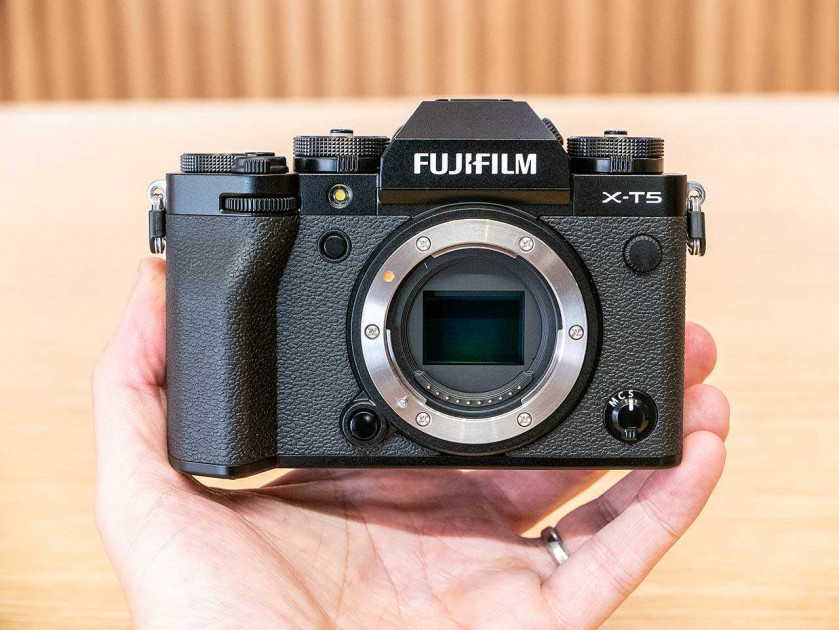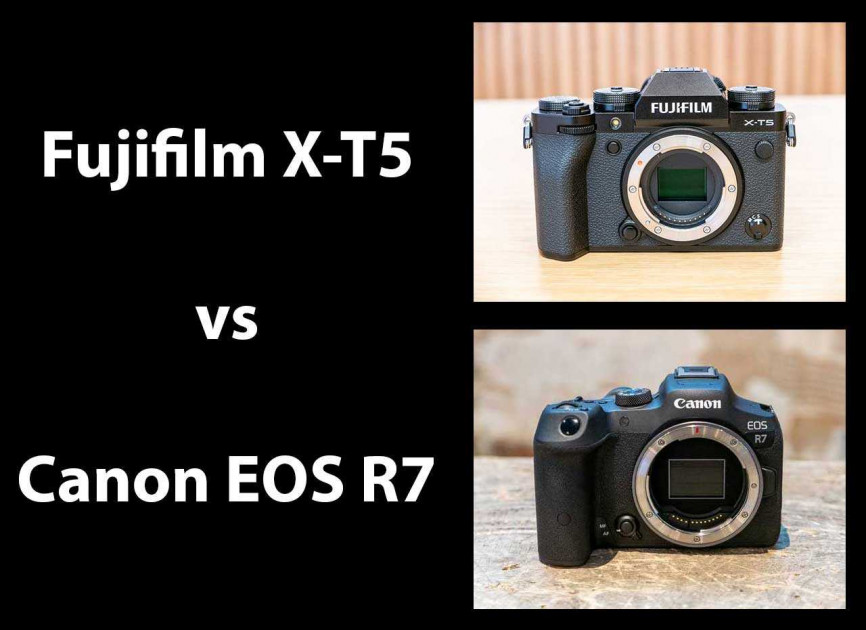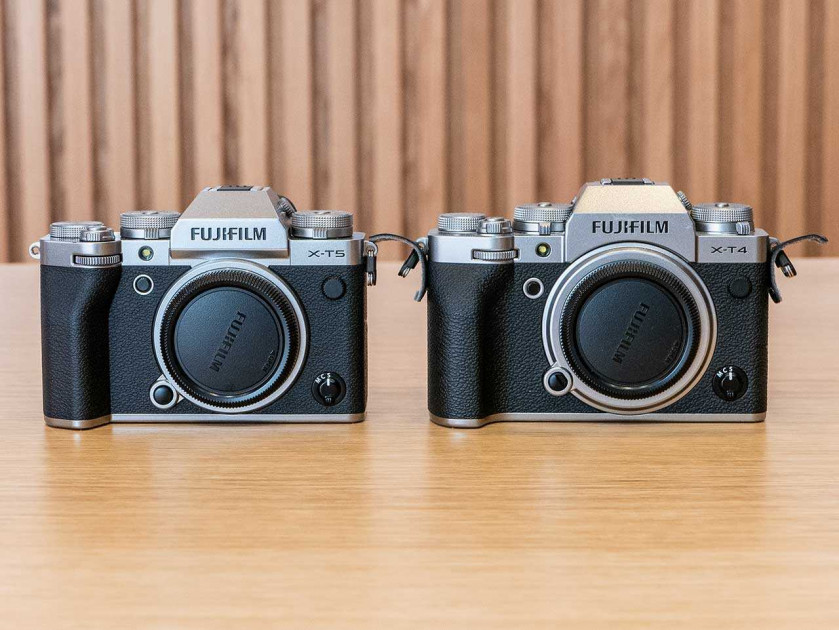
The X-T5 is the 2022 replacement for Fujifilm’s popular retro APS-C sensor mirrorless camera, the X-T4 that was released two years ago. We got hands-on with the XT5 recently, so find out what we think of this new mirrorless model by reading our detailed first impressions…
Eight years have passed since the launch of the X-T1 back in January 2014, and now Fujifilm have just released the 5th generation X-T5 model.
As with all of the previous versions, picking the X-T5 up for the first time you’d be hard pressed to tell it apart from its predecessor, as our side-by-side comparison photos below clearly show.
A closer glance reveals that it is noticeably smaller than the X-T4, though, largely thanks to the change in LCD screen from a vari-angle to tiltable model.
The X-T5 is also 50g lighter than its predecessor, too, so if you ever thought that the XT4 was getting a bit too large and heavy for its own good, you’ll welcome the changes that Fuji have made to the 2022 version.
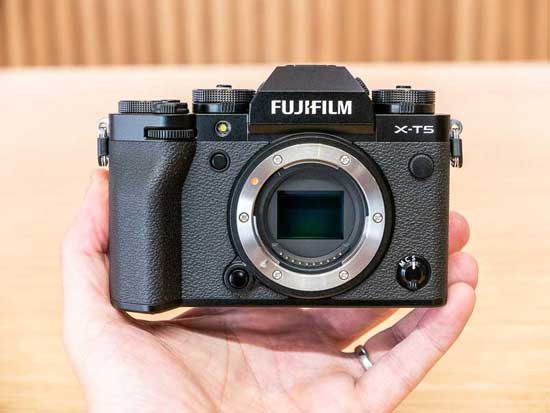
So the XT5 sees a return to the tilting LCD screen that was featured on the X-T but dropped for the X-T4, reflecting the fact that Fujfilm are repositioning the X-T5 as a predominantly stills-focused camera, in the wake of the recent launch of the powerful hybrid X-H2 and X-H2S models.
We actually prefer a vari-angle screen to a tiltable one because as well as making those all-important selfies easier (!), you can also fold it inwards against the back of the camera to protect it. This isn’t an option on the X-T5, so it would be prudent to invest in a screen protector to help prevent it from being scratched.
All of the other significant changes to the X-T5 – and there are lots of them – are internal, so if you’re a long time XT-series camera user, you’ll feel immediately at home with this new model which carries on the long-standing Fuji tradition of offering a plethora of external exposure controls.
The new XT5 does boast a number of important improvements under-the-hood to more than warrant its release.
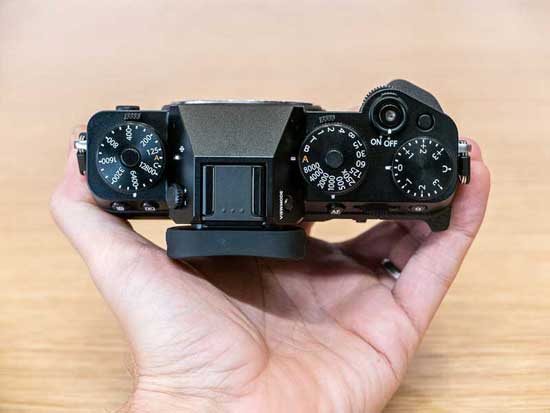
Chief among these is the significant upgrade to exactly the same 40 megapixel CMOS sensor that’s used by the X-H2, which offers a massive boost in resolution compared to its 26 megapixel predecessor.
With the latest X-Processor 5 also on-board, Fujifilm are claiming that the XT5 offers exactly the same image quality as the XH2, saying that it’s impossible to tell them apart other than from their EXIF data.
So if you wanted the extra resolution offered by the 40 megapixel sensor but were put off by the X-H2’s more DSLR-like interface, the new X-T5 with its full range of manual controls is definitely the camera for you.
Reflecting the fact that it’s £$200 cheaper than the X-H2, it’s important to note that the X-T5 has a lot less buffer memory than its more expensive sibling.
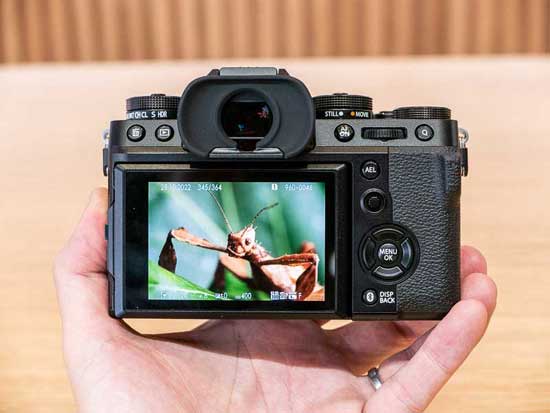
So while it can shoot at the same 20fps electronic shutter and 15fps manual shutter burst rates, the amount of shots that it can take at those rates before slowing down is much smaller – up to 1000+ JPEGs or 400 RAW files on the X-H2 versus just 119+ JPEGs or 19 RAW files on the X-T5.
This makes the newer XT5 model less well suited to sports, wildlife and action photography in general, especially if you shoot mainly in RAW.
Even X-T4 owners will be better served sticking with their current camera if burst shooting is of paramount importance. That model was something of a speed demon when it was released in 2020, so much so that it actually still out-performs the new X-T5.
The XT4 can shoot at 20fps when using the electronic shutter without any crop, or 30fps with a 1.25x crop applied,. whereas the XT5 can only shoot at up to 20fps when using the electronic shutter, and that’s with a 1.29x crop applied.

On the other hand, the XT5’s much greater 40 megapixel resolution will allow for more aggressive cropping during post-production, and the much faster 1/180,000th sec top shutter speed when using the electronic shutter may come in very handy too.
As well as offering more resolution, the X-T5 has another ace up its sleeve in the form of the Pixel-shift Multi-shot mode.
The X-T5 is the first ever XT-series model to feature this special shooting mode, which combines 20 images to create one 160 megapixel image for the ultimate in resolution.
You can’t use it hand-held or with moving subjects like on some competitors’ models, but it’s none-the-less a great feature that further bolsters the stills-focused nature of this particular camera.

Despite Fuji’s insistence that this is more a camera for stills photographers, the new X-T5 notably out-performs its predecessor in this area, offering 6K recording and uncropped 4K/60p, both of which the X-T4 doesn’t offer.
The XT5 also additionally offers the new F-Log 2 profile with up to 14+ stops of dynamic range, 12-bit RAW video output and a digital zoom function.
So while you may not be buying the XT5 for its video capabilities, rest assured that it’s still a very capable hybrid camera, if not quite on a par with the X-H2.
Similarly, while the auto-focus specs look quite similar to the X-T4, the new X-T5 actually offers exactly the same subject detection as the more expensive X-H2, so it can automatically detect animals, birds, cars, bikes, planes and trains.
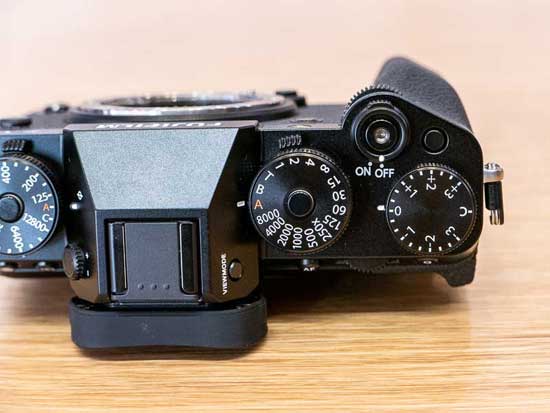
Fujifilm have also further improved the auto-focus algorithm, claiming that the AF system is 3x faster on the X-T5 than on the X-T4, and also with better eye/face detection than the older model.
Somewhat controversially, the new X-T5 does not support a vertical battery grip – there are no contacts at all on the bottom of the camera.
Fujifilm told us that this decision was based on the market data for the X-T4 which showed that the majority of owners did not buy one.
Instead, you can buy the optional MHG-XT5 metal hand grip if you feel than the body on its own is too small.

Its predecessor does support a vertical battery grip, which as well as making handling easier in portrait mode, greatly increases the available battery life.
As you’d perhaps expect, the key technical differences between the XT5 and the XH2 are all in favour of the more expensive model.
So the XT5 doesn’t offer 8K video recording, has a much smaller buffer, uses slower memory cards, has a lower-spec EVF, doesn’t have full size HDMI or 3.5mm headphone sockets, and doesn’t support an external cooling fan or a vertical grip.
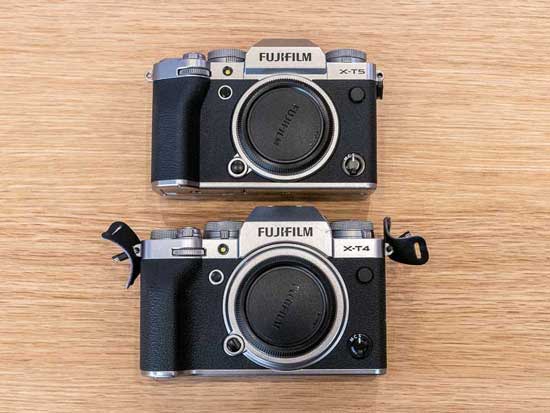
In summary, the new X-T5 strikes us as being a well-balanced cross between the X-T4 and the X-H2, inheriting the proven control layout of the former and most of the cutting-edge features from the latter model.
It clearly has a more pronounced emphasis on stills photography than the hybrid X-H2, yet is still a better appointed camera for video than its predecessor.

